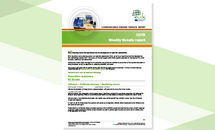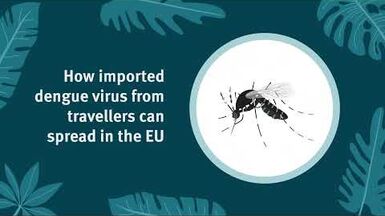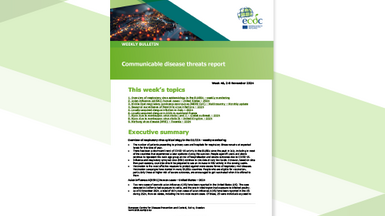Communicable disease threats report, 21-27 February 2016, week 8
The ECDC Communicable Disease Threats Report (CDTR) is a weekly bulletin for epidemiologists and health professionals on active public health threats. This issue covers the period 21-27 February 2016 and includes updates on Zika virus, measles and seasonal influenza.
Executive Summary
R) is a weekly bulletin for epidemiologists and health professionals about active public health threats. This issue covers the period 21 to 27 February 2016 and includes updates on Zika virus infection, seasonal influenza in Europe and suspected haemolytic uraemic syndrome (HUS) cases in Romania.
Zika – Multistate (world)
Zika virus infections continue to spread to previously unaffected areas of the world.
Several countries in the Americas, Caribbean and the Pacific continue to report an increase in autochthonous cases of Zika virus infection. In the past week, two new territories, Saint Vincent and the Grenadines and Sint Maarten reported confirmed cases of Zika virus infection. As of 25 February 2016, 42 countries and territories have reported autochthonous cases of Zika virus infection in the past nine months.
Possible links between Zika virus infection in pregnancy and microcephaly of the foetus have been under investigation since October 2015. The magnitude of the risk that Zika virus infection during pregnancy will result in malformations in the foetus remains unknown at present. However, considering the growing body of evidence of adverse pregnancy outcomes associated with Zika virus infection, ECDC recommends that pregnant women should consider postponing non-essential travel to Zika-affected areas.
Influenza - Multistate (Europe) - Monitoring 2015–2016 season
During the past week, 29 of the 47 countries that reported epidemiological data, indicated medium-intensity influenza activity, while 11 reported low intensity. Albania, Finland, Greece, Ireland, Poland, Switzerland and the former Yugoslav Republic of Macedonia indicated high-intensity activity. On 25 February, WHO announced the recommended composition of influenza virus vaccines for use in the 2016–2017 northern hemisphere influenza season and update on “Antigenic and genetic characteristics of zoonotic influenza viruses and development of candidate vaccine viruses for pandemic preparedness”
Haemolytic uraemic syndrome (HUS) cases in young children – Romania
According to the Ministry of Health of Romania, 13 children, aged between 5 and 38 months, were identified with diarrhoea, vomiting and suspected HUS during the period 29 January to 9 February. Three of the cases have died. Six of the previously reported 13 cases tested positive for E. coli O26 by serology. None of the stool samples recently collected from family members of the still hospitalised children tested positive for E. coli.
Two ECDC experts and one EPIET fellow have been deployed to support the outbreak investigation upon request from the Romanian Ministry of Health.
Download






